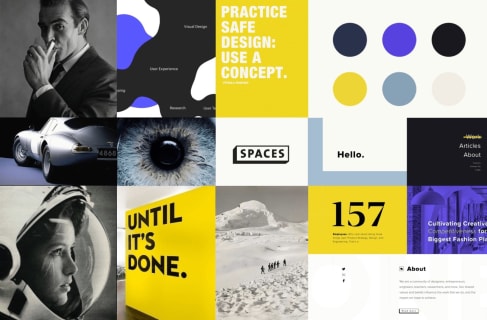"User satisfaction. User perspective. User-oriented approach" - an interview with Paweł Capaja
When you’re building digital products, good design matters. A well-designed digital product does more than just function; it does so reliably and gives the user exactly what they need and want. It reduces overall costs, increases conversions, and builds long-term loyalty in the customer.

Table of contents
- What does it mean to be a designer of digital products?
- What does your work with clients look like? What do they expect, what can you offer them?
- How can Product Designer help to validate the client’s business needs?
- What is the most important aspect of designing digital product?
- Could you elaborate?
- How you reconcile the needs of users, clients and the need for personal expression in your designs?
- In your opinion, how does design these days influence the way companies build their products?
- Let’s talk a bit more about you. What are your inspirations?
- Who or what has been the biggest influence on your work to date?
- How has your role as Product Designer evolved over the last years?
- Which projects are you most proud of and why?
- What was so special in these projects?
- What tools do you use on regular basis?
- In your opinion, what is the role of a designer?
- Thanks for your time Paweł!
Behind every well-designed product stands an experienced and skillful Product Designer. I asked Paweł Capaja, a Boldare Product Designer to share his thoughts and insights on the Product Designer’s role in the Digital Age.
What does it mean to be a designer of digital products?
Paweł Capaja: Well, for me the role has many different meanings. But I’d list my TOP 3 as creation, guidance and help.
You create things from scratch pretty much all day, every day. If not from scratch then it comes from different puzzles that you combine and - voila! a new experience has been created.
Guidance is important also as not only do we guide users to their goals while they use the product. It is also about guiding clients in how to please their users, how to approach business needs and product scaling.
And then there is help. Product Designers are here to help, which relates also to guidance I guess. But since users are our main focus we ought to do everything we can to make their lives easier and help them reach their goals. That, or we can mess with their lives with some bad decisions of ours. Not cool, right?
What does your work with clients look like? What do they expect, what can you offer them?
Frankly, they can expect many things but mostly they need a complex solution to their problems. Sometimes they need help to define those problems in the first place. And sometimes to validate their ideas. At some other time to create a solution and teach them how it works and how they, and the product users, can benefit from it.
And this is what our work looks like. Once we join our clients - and this is something I really cherish here in Boldare - we become a team. A team that gathers experts from different areas. That combination of knowledge allows us to reach for success. We share our knowledge and combine our skills. Communication here is crucial to define the steps required for achieving our business goals. And since everyone contributes to the final result, and the product goes live in whatever form - satisfaction guaranteed!
I suppose that is what we - Product Designers - can give to clients and users - satisfaction.
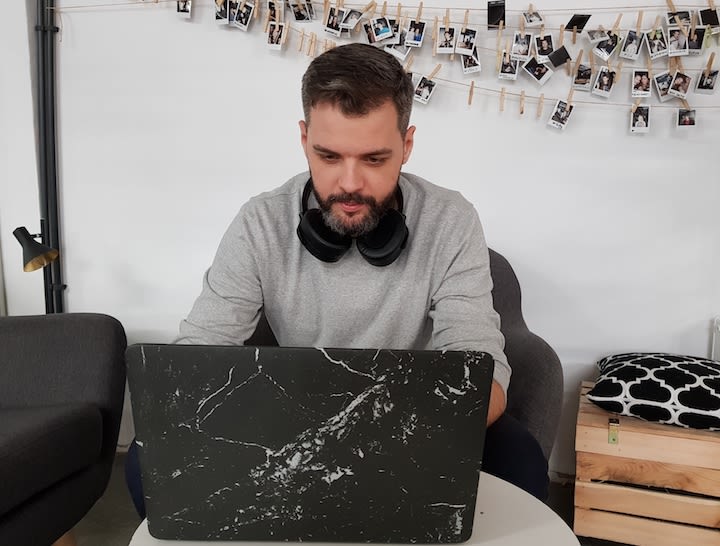
How can Product Designer help to validate the client’s business needs?
As I mentioned before, communication here is crucial. As Product Designers we have the opportunity to work with many different markets and to get to know different user profiles at the same time. This gives us some experience to validate ideas from a wider perspective. But it is more like a gut feeling and that sounds a bit too much like Jedi powers. No metrics or numbers involved. Bummer, right? No real evidence here…
Luckily, we have few tools to help us with that. Together with our clients we try to narrow the project’s scope so it can be verified in real life ASAP. This often requires an MVP approach. But once we reach that step we can test everything from the business model to UI and UX solutions. And thus verify our hypothesis.
We guide clients through that process because at some point they need to drop the idea of the “perfect solution” and try to reach the users with minimum functionality - enough just to let us know if the solution works for the target users.
Read an interview with Machine Learning Team on predictive maintenance
What is the most important aspect of designing digital product?
User satisfaction. User perspective. User-oriented approach. Understanding the user needs and expectations regarding products we create. You have to keep this in mind at every stage of product-building.
Could you elaborate?
Can I? Do we have time for that? I’ll try to keep it short. Every great product starts from an idea - mostly from an impulse, a trigger, a moment or situation. A spontaneous one mostly. But after that moment you have to get serious.
If we want to invest money in our idea we need to know everything we can to get the full context. But for the sake of this conversation, let’s pretend our client already did things like market and user research.
We have all the knowledge gathered, so based on that we can step into users’ shoes and try to use the product as if we were them. We list their needs and expectations. We follow that route when developing and reaching the MVP level. And finally we bring it to them and ask if this is what they needed. We collect their feedback and iterate an improved solution.
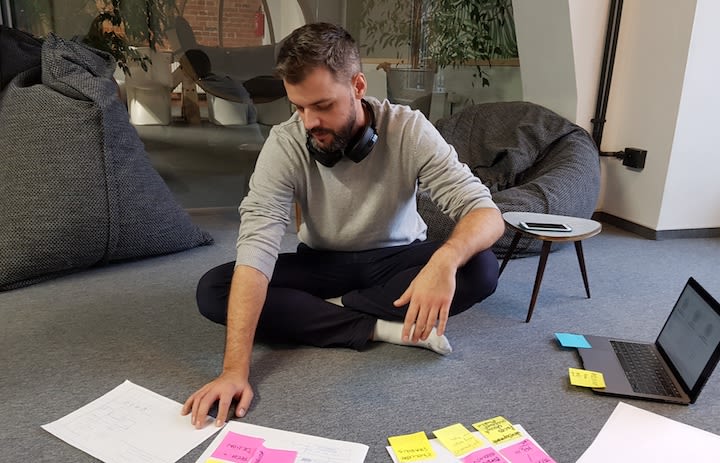
How you reconcile the needs of users, clients and the need for personal expression in your designs?
Every Designer has one own style, no doubt about that. Is that an obstacle during the product creation process? Not really. I don’t think so. It creates variety and helps to see similar problems from different angles. And users are satisfied as long as the tool is easy to use. They don’t bother about the shape of buttons or link colors as long as they understand the solution that is there to help them.
Also, different stages of the process help to validate how far or how close we are to our client’s expectations. We use moodboards at a certain stage. It is totally about the look and the feeling, where designers can express their vision and compare it to the one that came from the client. Mostly that synchronization helps in further cooperation.
Read on article about design sprints
In your opinion, how does design these days influence the way companies build their products?
Well, luckily for us, we live in times where design matters and currently it has a huge business value. Good design means something is better and easier to use. Means more satisfaction from having and using it.
It’s hard to know where this came from. But you can tell from Apple products or Red Dot Awards how significant design has become and how much influence it has regarding business.
That is one side of the coin - things need to be pretty. But there is also second one - products also need to be smart nowadays. And that is great. Also, it means you have to get some smart Product Designers to work on it. These are the people who can predict behaviors and answer users’ needs.
And look where it all goes now? AI, predictive algorithms? That is crazy! Makes you want to see the future already.
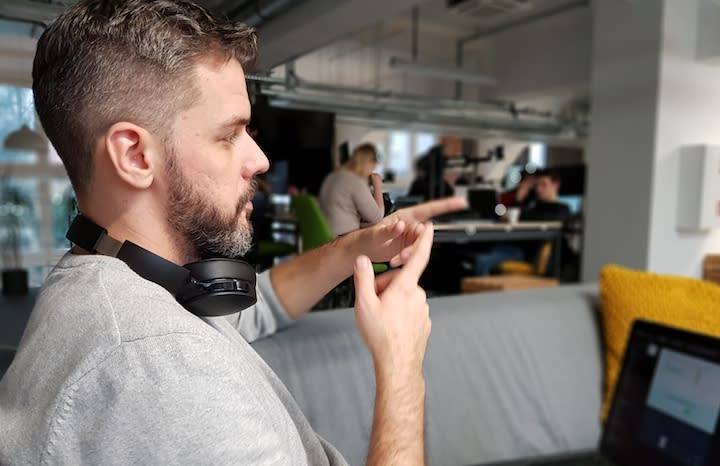
Let’s talk a bit more about you. What are your inspirations?
The thing is, in my opinion everything can be an inspiration. At some point, you pay attention to all of your surroundings in great detail, checking how things work. Door handles, restaurant menus, Tesla cars - all this fits in and you start to see patterns and solutions. It is inside of you - the need for the design satisfaction.
Teammates are also a great inspiration. We all do the Internet research about new projects other people are working on, but there is nothing better than talking with your fellow designers. Catching different perspectives and understanding the variety of different angles can open your eyes to something you did not expect.
And of course, music. I guess it stimulates our brains very much. It helps in giving you that impulse for creation. Also, it sometimes helps to feel like the target user if you’ve picked the right tune.
Who or what has been the biggest influence on your work to date?
Hard to tell. You want me to drop a few names? I’m bad at remembering names {laugh}. I guess Tobias van Schneider and the way he communicates with his audience. He reminds me that the communication can take different forms. Plus, his designs follow the „Less is more” rule, which I cherish a lot.
And since the whole world is moving towards more and more immersive interactions, Gleb Kuznetsov is my inspiration regarding movement and animations. I am nowhere near that level but every time I see this guy in action, and his works, it gives me chills. It’s like watching the near future of the interface. Awesome animations.
And there are some more, but I guess there is no sense in listing all of them here. But for sure it is worth watching other designers out there, not only paying attention to your own solutions.
How has your role as Product Designer evolved over the last years?
It is quite a route actually. An evolution from the two separate roles (UX and UI designer) including business perspectives. To be honest, I do not understand how most people try to separate those. Why would you want to narrow yourself and lose the perspective? For building better products, you have to know all of the above to find the correct solution, and even then it’s hard.
Also direct communication with the client has moved ahead, and I love it. There is no better way of understanding needs than talking face to face and discussing the problem directly. Easily done nowadays.
For sure the number of skills and areas to cover have grown, but it also creates a lot more opportunities. Which I am glad of.
Which projects are you most proud of and why?
Most projects I worked on were fun. There were no two projects the same ever. Behind every one of them stand interesting people with different problems to solve. Different cultures, different places.
But if I had to pick two it would be the Sonnen Charger App and the Polco Voting Platform. And the reason is, these clients were concerned about their users most of all. And it gave pretty nice results.

What was so special in these projects?
Like I said, their concern for their users. They knew the target very well and it helped a lot in building a better product, in my opinion.
Polco is a company from Texas, USA, and we’ve created two releases for the platform. The first was an MVP created to validate market needs, and the second one was all about improving the experience and the needs of target users.
Sonnen Charger was a bit different. They also knew their users very well. But it also involved a specific mindset (green energy and ecology) that defined a lot of behaviors. The solution needn’t have been perfect as long as it fulfilled the higher purpose. There was a lot of dedication to it and it was fun to help the client achieve their goals regarding users. Especially because the users themselves were very keen on trying new things and giving some feedback. I guess I learned a lot. Plus - great team we had there!
What tools do you use on regular basis?
The standard ones - Sketch (so smooth), Adobe package (so overpriced), Invision, Zeplin (the force is strong with this one!) and my favorite for prototyping - Flinto (deserves more hype, I guess). Last but not least - pen and paper.
In your opinion, what is the role of a designer?
Oh, there are many! Teammate, guide, explorer, psychologist, motivator, dreamer, visionary, selfish bastard - you pick one!
Teammate, because as I already stated we are all members of one team. Even the client with his knowledge about the product and the business idea takes part in it. And since communication is so important throughout the whole process, you want all your team members to feel encouraged to discuss everything. That’s fun actually.
Guide, because you help to go through the whole process of the product creation. Before the actual development, the Product Designer has to know as much as possible about the case to help your client understand it all.
Explorer means you do a lot of research and combine different puzzles to create something new. And most of the time you do not know how things will work out. Not until users validate your ideas. This means entering some wild areas sometimes!
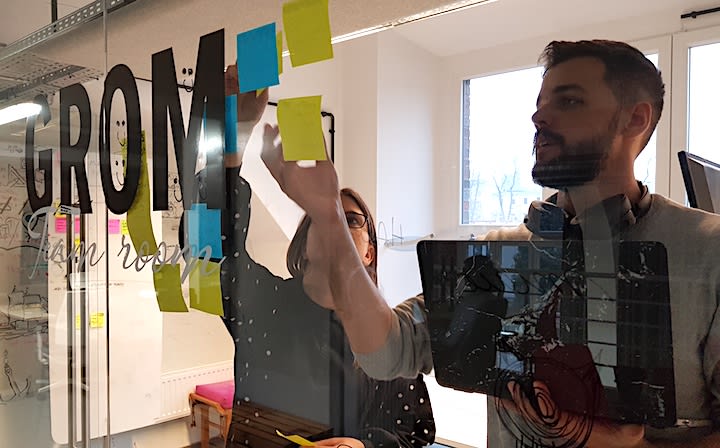
Psychologist (but not in terms of a PhD! That would be nuts) - because understanding the basics of human behavior helps a lot. For example, in bringing the right mood to the product for users.
Being a motivator means keeping your team on the right track and helping them to see the bigger picture when things get tough.
Dreamer, because we - Product Designers - dream about the perfect implementation of our wild ideas someday!
By visionary, I mean a role which predicts some solutions even ahead of the current state of the market. It is hard and risky but if you have enough confidence it will pay off I can assure.
Selfish bastard is my favorite. “Confident” would also fit here, but it would sound less dramatic wouldn’t it? It is possible that in your team sometimes it is not so nice and easy. Not everyone will understand the path you take during product creation and sometimes you have to force some solutions. And after it has worked, you gain more trust in each other. A very important role in my opinion.
Thanks for your time Paweł!
Well, it seems we’ve reached the end. Thank you Kamil, it was nice talking to you!
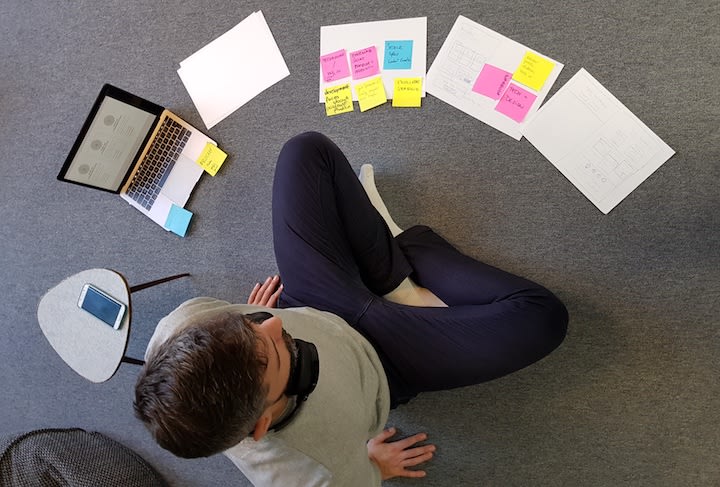
Know Paweł Capaja better
Paweł is a Product Designer with 10 years of experience on the market. He worked with in different fields - from the e-commerce side, up to pure marketing agency tasks, and now, in Boldare.
Why did he decide to choose this career path and has joined Boldare?
I wanted something more than just pure designing, and so the idea of product design emerged. It seemed perfect and since that time (nobody knows the exact date!) I have been an eager enthusiast of this approach, working together with clients and their digital products.
Share this article:


